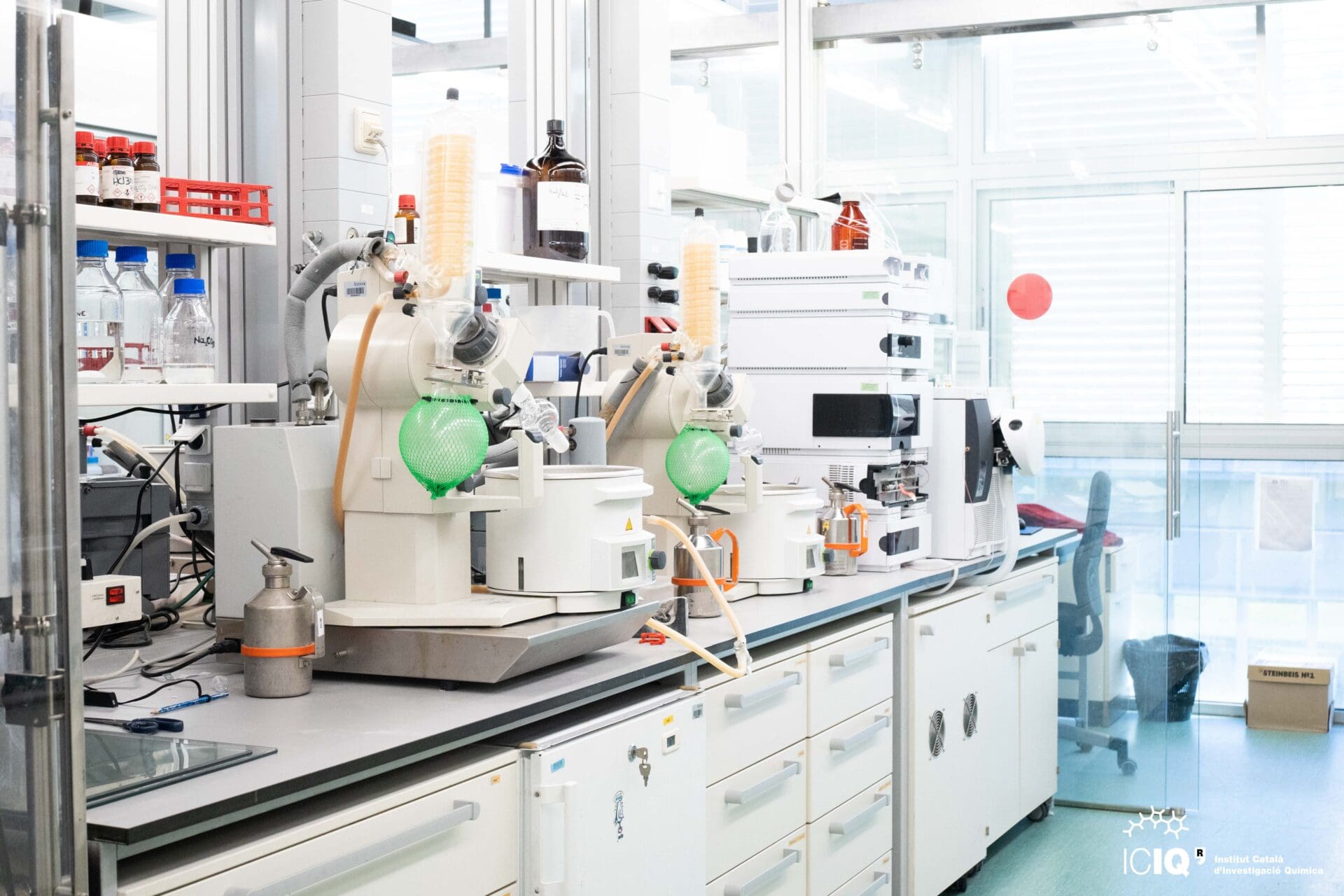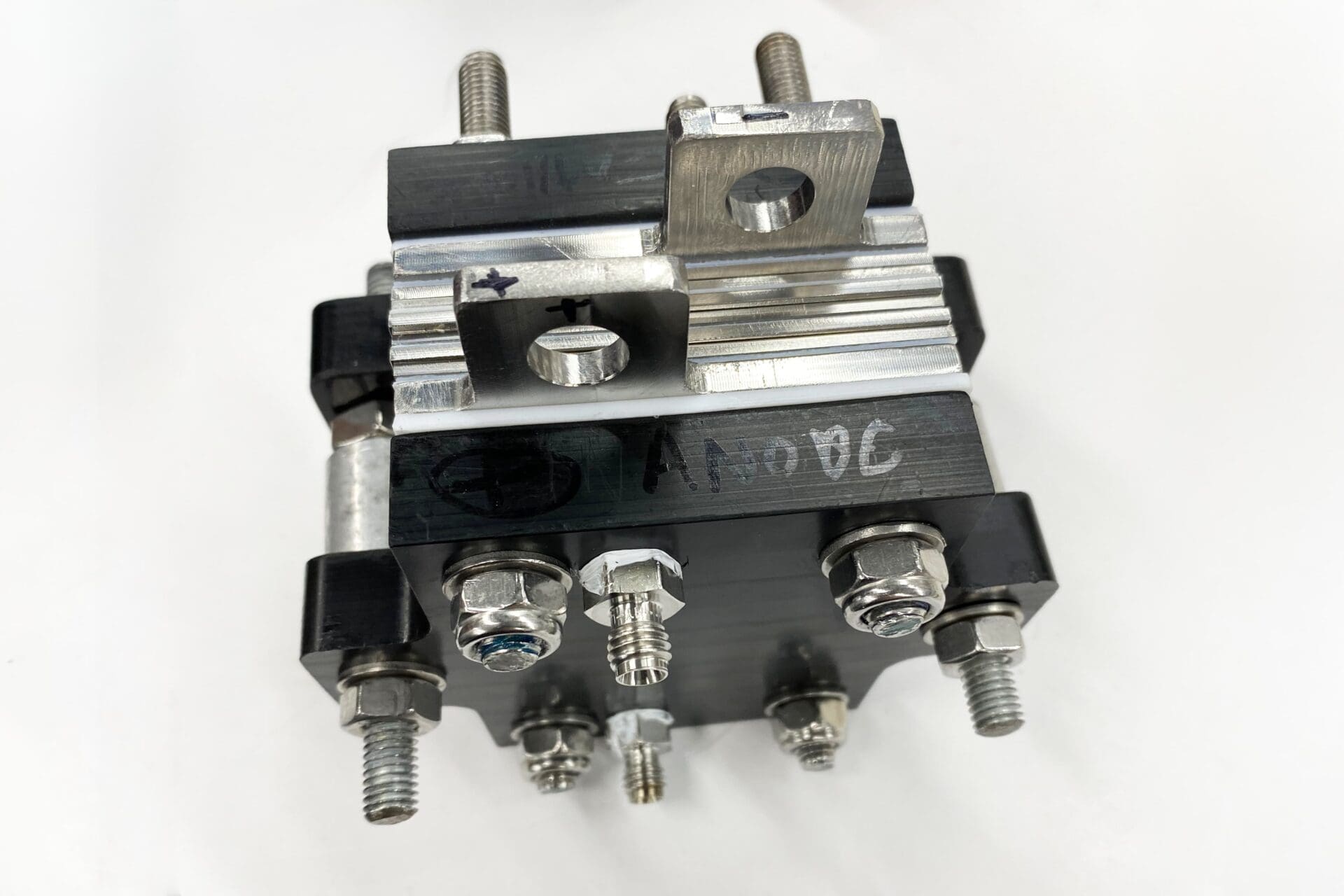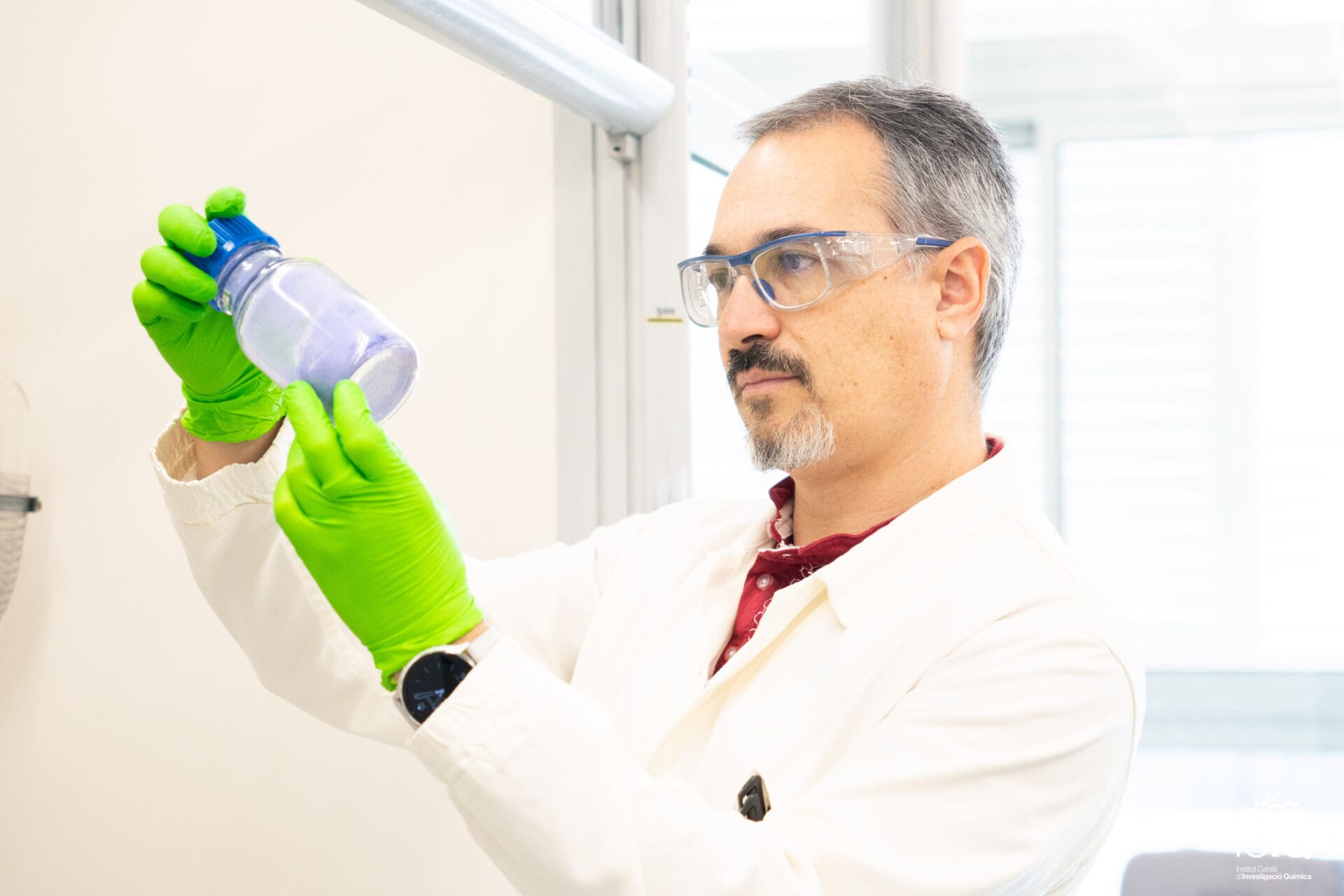New insights reveal TAMOF-1 as efficient CO₂ adsorbent for biogas upgrading
Recent findings explain the adsorption dynamics that make this MOF suitable for scalable gas separation technologies
15th April 2025 – A new study published in Nature Communications presents TAMOF-1, a porous crystalline material, as a strong candidate for the selective capture of carbon dioxide (CO₂) in gas mixtures—particularly in the context of biogas purification. The research was led by Prof. J. R. Galán-Mascarós at the Institute of Chemical Research of Catalonia (ICIQ), Prof. Sofia Calero at the Eindhoven University of Technology and Dr. Stefano Giancola at Orchestra Scientific, with contributions from a broad consortium of European institutions.
TAMOF-1 belongs to the family of metal–organic frameworks (MOFs), materials known for their porous structures and high surface areas. What distinguishes TAMOF-1 is its homochirality, structural stability, and ability to selectively adsorb CO₂ over methane under ambient conditions. In trials, it achieved a CO₂ uptake of over 4 mmol g⁻¹ and a CO₂/CH₄ selectivity greater than 40, placing it among the more effective physisorbents reported to date.
Its performance is underpinned by a dual-site adsorption mechanism. At lower concentrations, CO₂ binds to copper centres within the framework; once these sites are occupied, additional molecules are hosted within the open channels, engaging in weaker interactions with various functional groups. This arrangement facilitates both high selectivity and low-energy regeneration, characteristics critical for efficient gas separation technologies.
“What makes TAMOF-1 truly promising is the combination of its selective CO₂ uptake with the possibility of regenerating the material under mild conditions,” says Prof. Galán-Mascarós. “This balance between performance and energy efficiency is essential if we want to move closer to practical, viable solutions for carbon capture.”
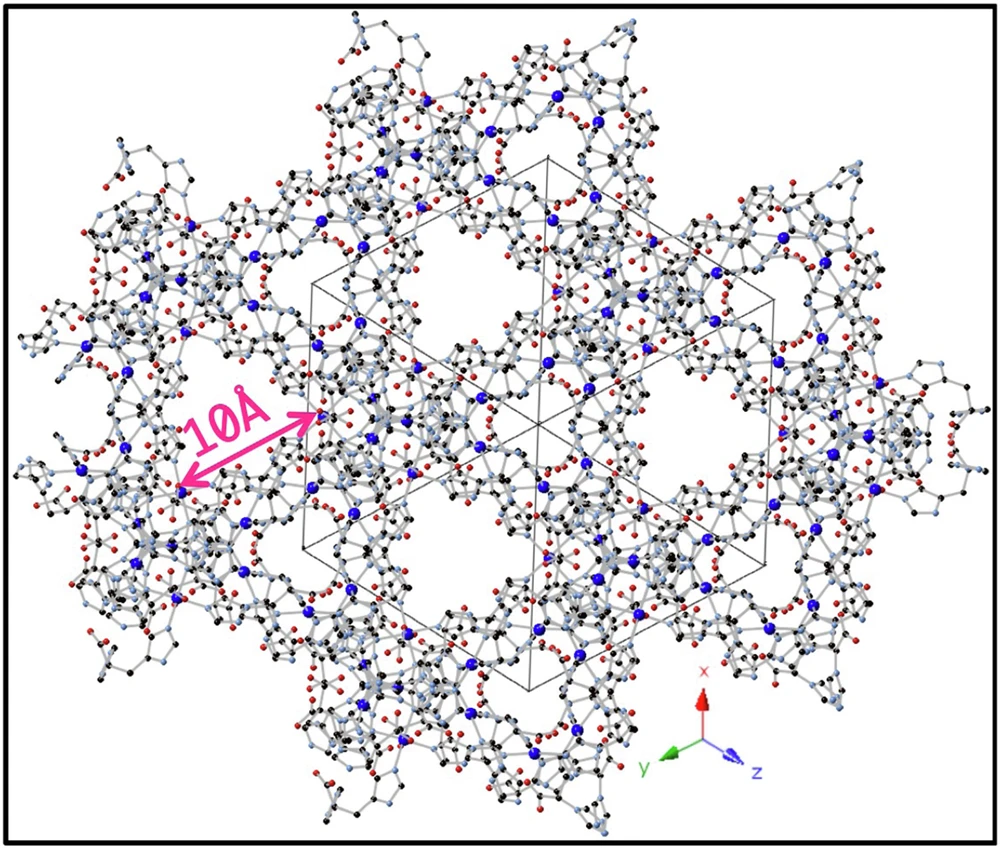
Representation of the crystal structure of TAMOF-1, showing the network of open 10 Å-wide channels. Color code: Cu, deep blue; O, red; N, light blue; C, black. Hydrogen atoms omitted for clarity.
To investigate the behaviour of gas molecules within the material, the team employed a combination of neutron diffraction, infrared spectroscopy, and computational simulations. These tools provided insight not only into where the CO₂ molecules bind, but also into how the framework could be cycled with minimal energy input—an essential advantage over traditional chemical absorption techniques.
In broader terms, the work responds to ongoing challenges in capturing CO₂ from industrial emissions and renewable gas streams. Biogas, often composed of nearly equal parts methane and carbon dioxide, requires purification before it can be used as a fuel. Traditional separation methods, though effective, can be energy-intensive and produce chemical waste. TAMOF-1 offers a potential alternative, compatible with physical adsorption technologies such as pressure or thermal swing systems.
TAMOF-1 is synthesised from low-cost, water-soluble and non-critical raw materials, including a derivative of the natural amino acid L-histidine and copper(II) salts. Its robustness under humid and acidic conditions further strengthens its case for practical deployment.
This research forms part of the SUPERVAL project, funded by the European Union through the Horizon Europe programme. SUPERVAL focuses on the sustainable use of flue gases through advanced materials and electrochemical systems. TAMOF-1 and its related structures are protected under a European patent (EP16382480.8), and development efforts continue beyond the academic setting. The material and its applications are being explored commercially through Orchestra Scientific, a spin-off company founded by ICIQ and ICREA. The company aims to translate laboratory insights into scalable CO₂ capture technologies suited to industrial and environmental needs.

The SUstainable Photo-ElectRochemical VALorization of flue gases – SUPERVAL project has received funding from the European Union’s Horizon Europe, Grant Agreement No. 101115456.
Reference publication
Selective adsorption of CO₂ in TAMOF-1 for the separation of CO₂/CH₄ gas mixtures
Capelo-Avilés, S.; de Fez-Febré, M.; Balestra, S. R. G.; Cabezas-Giménez, J.; Tomazini de Oliveira, R.; Gallo Stampino, I. I.; Vidal-Ferran, A.; González-Cobos, J.; Lillo, V.; Fabelo, O.; Escudero-Adán, E. C.; Falvello, L. R.; Parra, J. B.; Rumori, P.; Turnes Palomino, G.; Palomino Cabello, C.; Giancola, S.; Calero, S.; Galán-Mascarós, J. R.
Nat Commun 2025, 16, 3243
DOI: 10.1038/s41467-025-58426-w
Related news

Let's create a brighter future
Join our team to work with renowned researchers, tackle groundbreaking
projects and contribute to meaningful scientific advancements






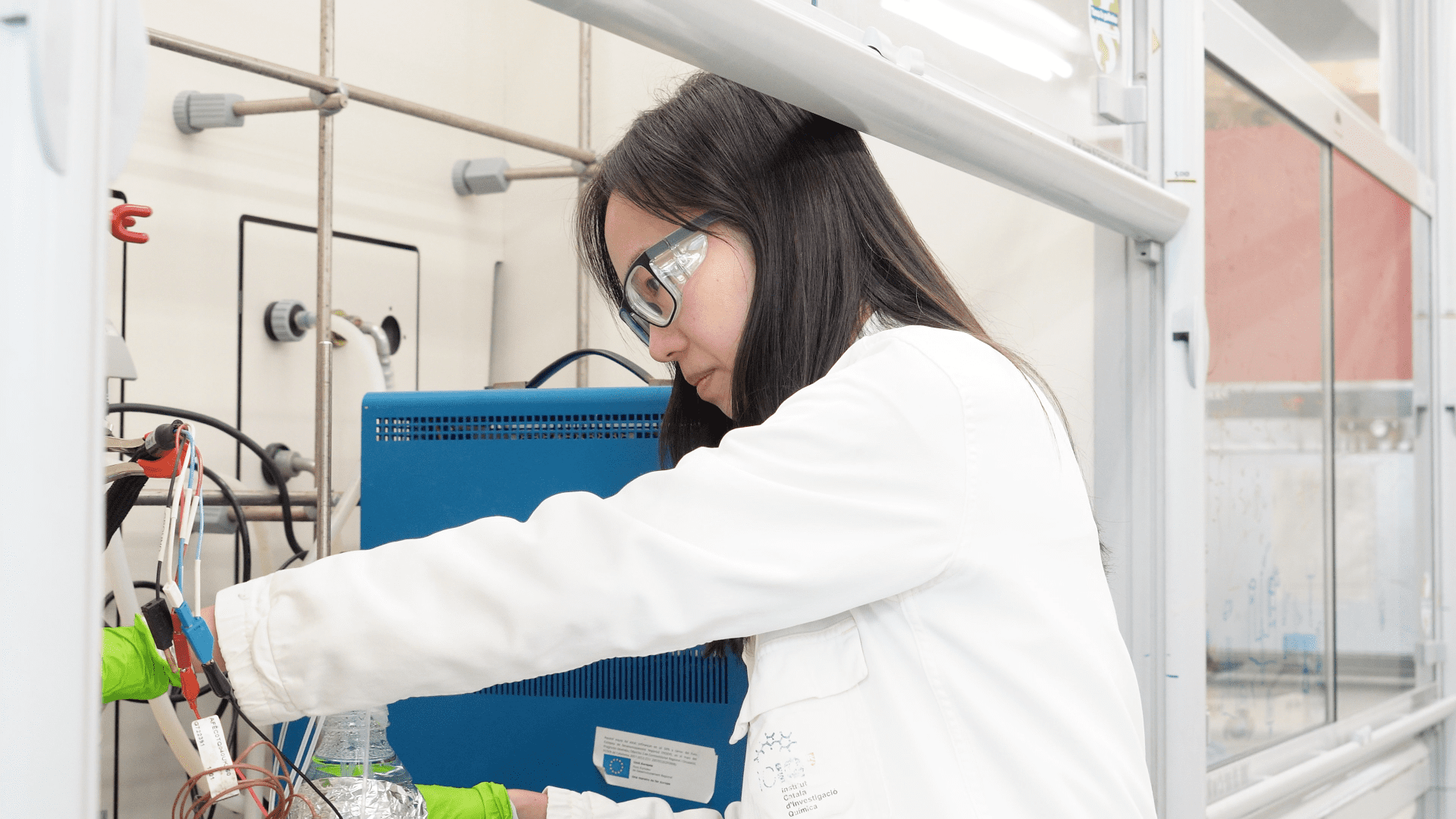
 11-04-2025
11-04-2025 

